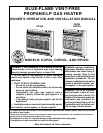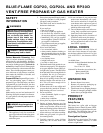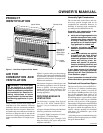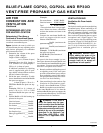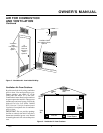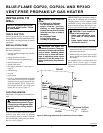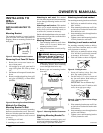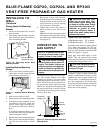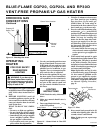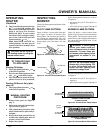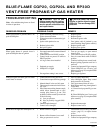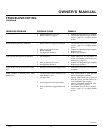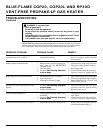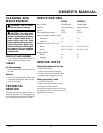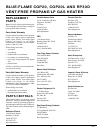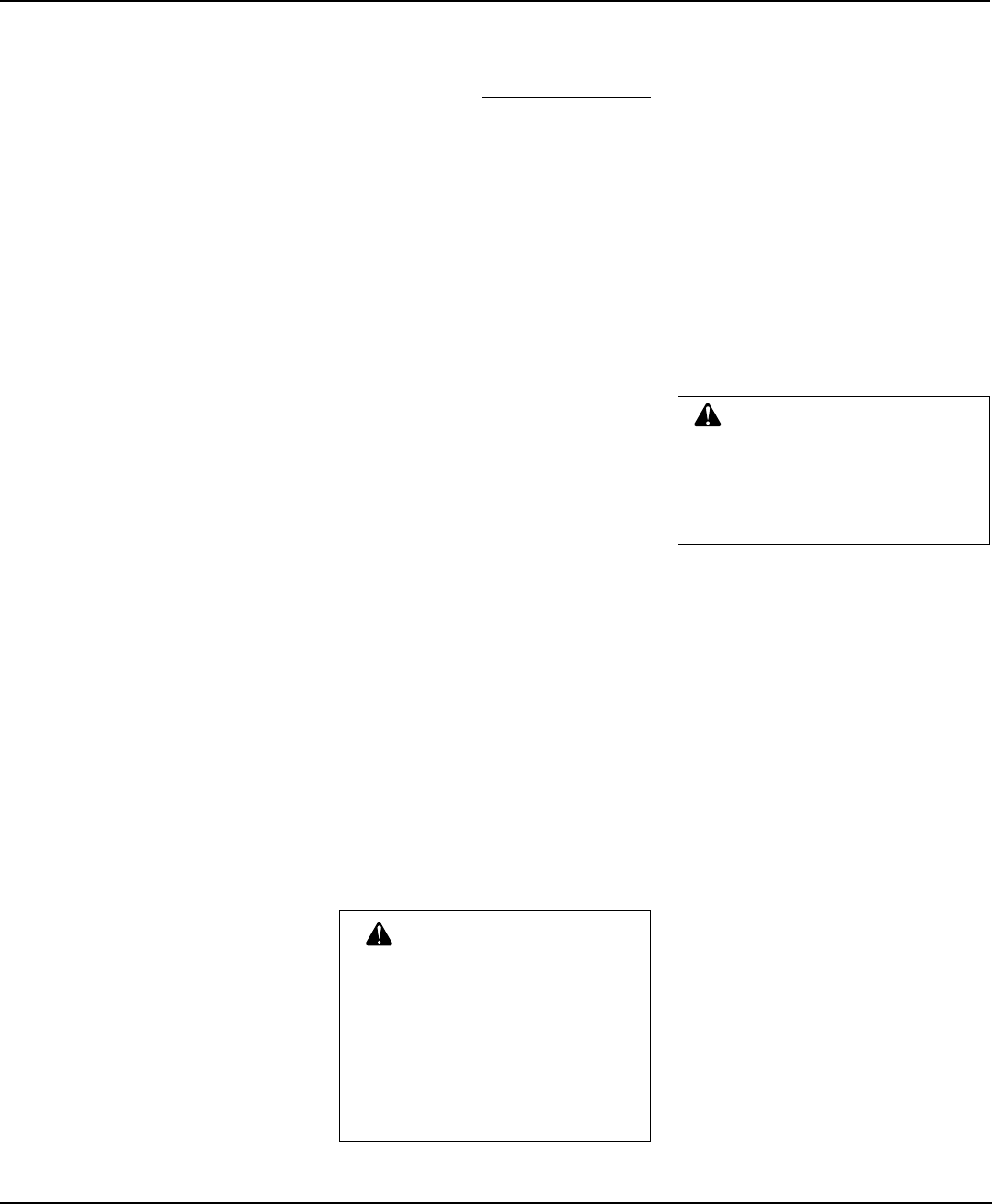
4
103569
VENT-FREE PROPANE/LP GAS HEATER
BLUE-FLAME CGP20, CGP20L AND RP30D
Continued
WARNING: If the area in
which the heater may be oper-
ated is smaller than that defined
as an unconfined space, provide
adequate combustion and venti-
lation air by one of the methods
described in the
National Fuel
Gas Code, ANSI Z223.1, 1992,
Section 5.3
or applicable local
codes.
WARNING: Rework work-
sheet, adding the space of the
adjoining unconfined space. The
combined spaces must have
enough fresh air to supply all
appliances in both spaces.
AIR FOR
COMBUSTION AND
VENTILATION
Continued
DETERMINING AIR FLOW
FOR HEATER LOCATION
Determining if You Have a
Confined or Unconfined Space
Use this worksheet to determine if you have
a confined or unconfined space.
Space: Includes the room in which you
will install heater plus any adjoining rooms
with doorless passageways or ventilation
grills between the rooms.
1. Determine the volume of the space
(length x width x height).
Length x Width x Height =
___________cu. ft. (volume of space)
Example:
Space size 20 ft. (length) x
16 ft. (width) x 8 ft. (ceiling height) =
2560 cu. ft. (volume of space)
If additional ventilation to adjoining
room is supplied with grills or open-
ings, add the volume of these rooms to
the total volume of the space.
2. Divide the space volume by 50 cubic
feet to determine the maximum Btu/Hr
the space can support.
______(volume of space) ÷ 50 cu. ft. =
(Maximum Btu/Hr the space can sup-
port)
Example:
2560 cu. ft. (volume of
space) ÷ 50 cu. ft. = 51.2 or 51,200
(maximum Btu/Hr the space can sup-
port)
3. Add the Btu/Hr of all fuel burning ap-
pliances in the space.
Vent-free heater _________ Btu/Hr
Gas water heater*________ Btu/Hr
Gas furnace ____________ Btu/Hr
Vented gas heater ________ Btu/Hr
Gas fireplace logs ________ Btu/Hr
Other gas appliances*+____ Btu/Hr
Total = ____ Btu/Hr
Example:
Gas water heater 40,000 Btu/Hr
Vent-free heater + 20,000 Btu/Hr
Total = 60,000 Btu/Hr
* Do not include direct-vent gas appli-
ances. Direct-vent draws combustion
air from the outdoors and vents to the
outdoors.
4. Compare the maximum Btu/Hr the
space can support with the actual
amount of Btu/Hr used.
__________ Btu/Hr (maximum the
space can support)
___________ Btu/Hr (actual amount of
Btu/Hr used)
Example:
51,200 Btu/Hr (maximum
the space can support)
60,000 Btu/Hr (actual amount of
Btu/Hr used)
The space in the above example is a con-
fined space because the actual Btu/Hr used
is more than the maximum Btu/Hr the space
can support. You must provide additional
fresh air. Your options are as follows:
A. Rework worksheet, adding the space of
an adjoining room. If the extra space
provides an unconfined space, remove
door to adjoining room or add ventila-
tion grills between rooms. See Ventila-
tion Air From Inside Building.
B. Vent room directly to the outdoors. See
Ventilation Air From Outdoors, page 5.
C. Install a lower Btu/Hr heater, if lower
Btu/Hr size makes room unconfined.
If the actual Btu/Hr used is less than the
maximum Btu/Hr the space can support, the
space is an unconfined space. You will need
no additional fresh air ventilation.
VENTILATION AIR
Ventilation Air From Inside
Building
This fresh air would come from an adjoining
unconfined space. When ventilating to an
adjoining unconfined space, you must pro-
vide two permanent openings: one within
12" of the ceiling and one within 12" of the
floor on the wall connecting the two spaces
(see options 1 and 2, Figure 2 page 5). You
can also remove door into adjoining room
(see option 3, Figure 2). Follow the National
Fuel Gas Code NFPA 54/ANSI Z223.1, Sec-
tion 5.3, Air for Combustion and Ventilation
for required size of ventilation grills or
ducts.



